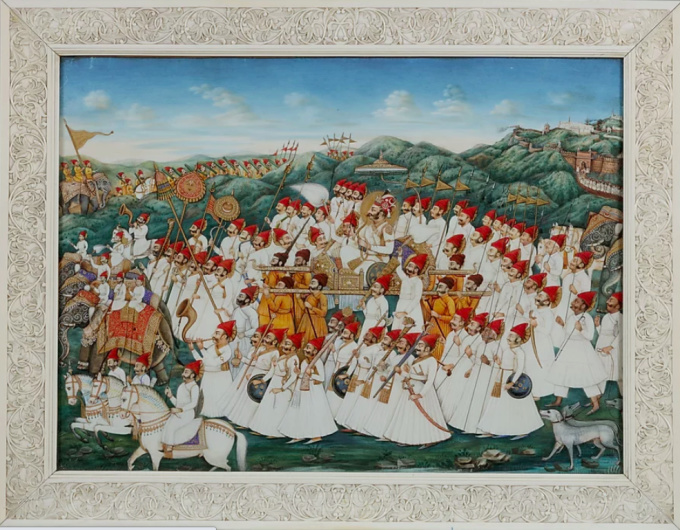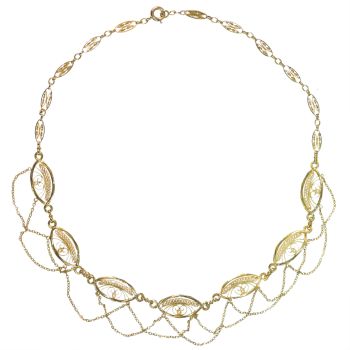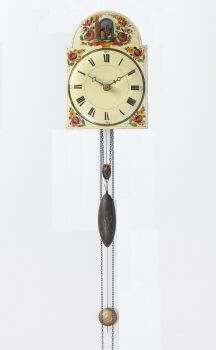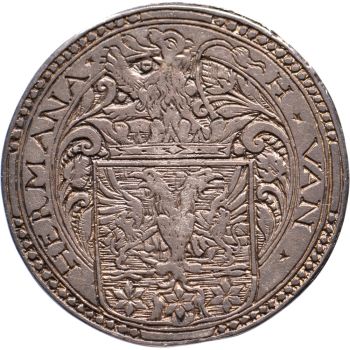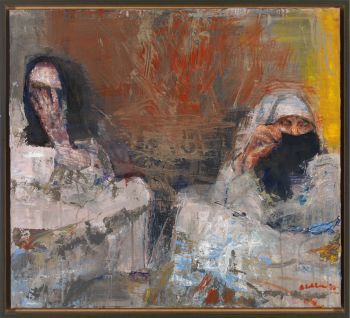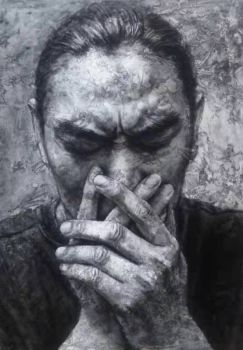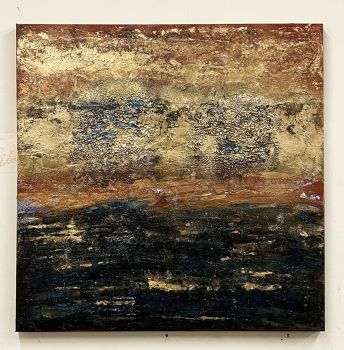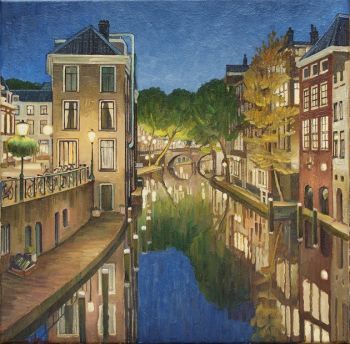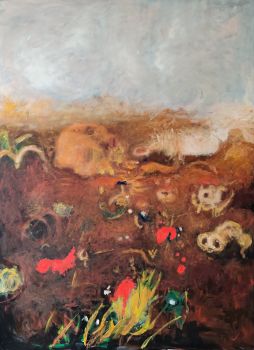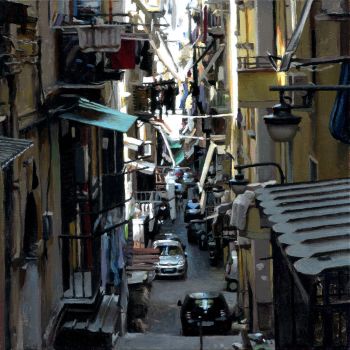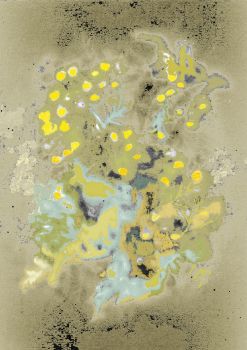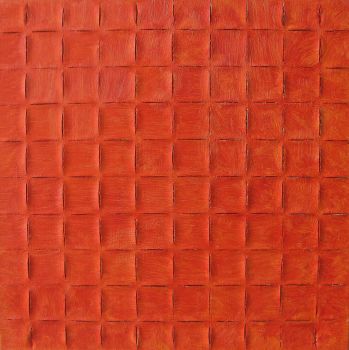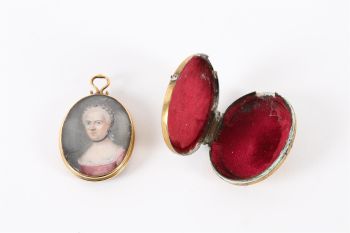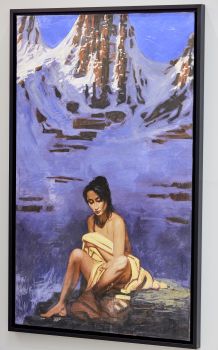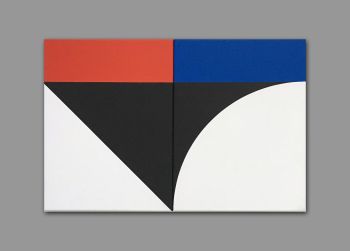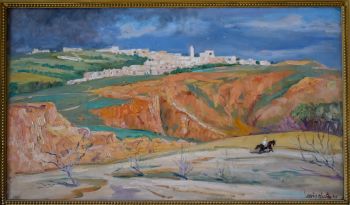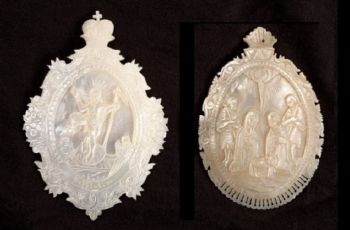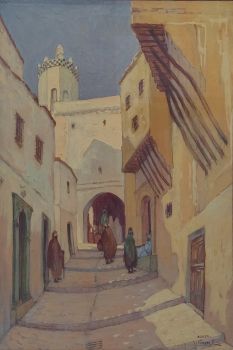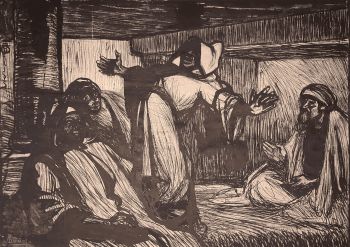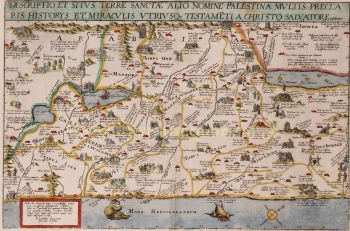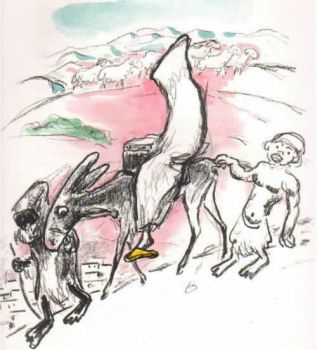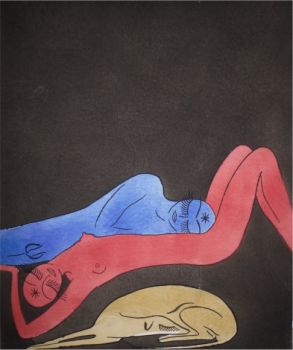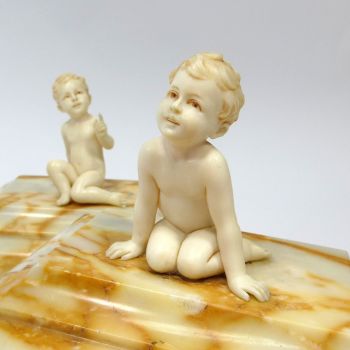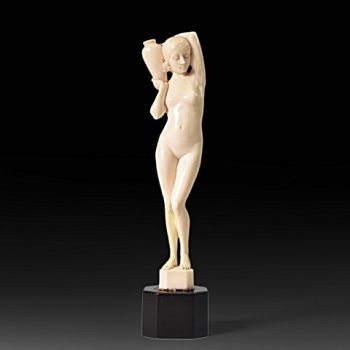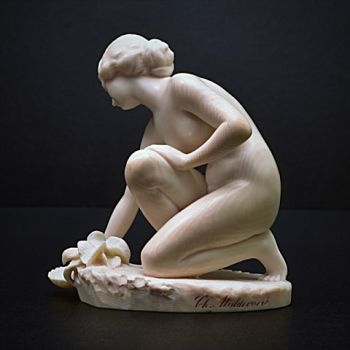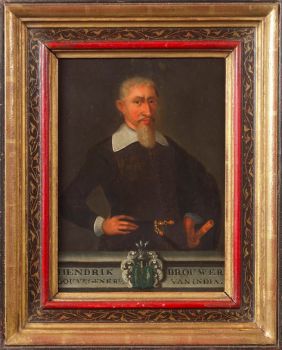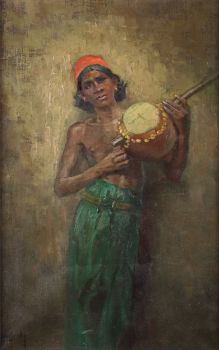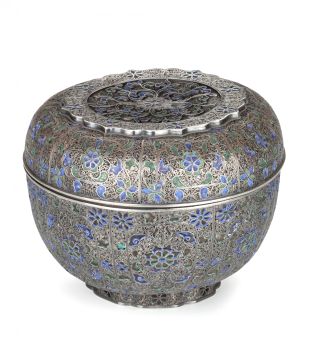WICHTIGE UND SELTENE GROSSE INDISCHE 'COMPANY STYLE'-MALEREI AUF Elfenbein, die eine Parade darstell 1850 - 1900
Unbekannter Künstler
KnochenElfenbeinAquarell
Preis auf Anfrage
Zebregs & Röell - Fine Art - Antiques
- Über KunstwerkIMPORTANT AND RARE LARGE INDIAN 'COMPANY STYLE' PAINTING ON IVORY DEPICTING A PARADE
North India, late 19th century
Opaque watercolour and gold on ivory, in finely carved ivory frame.
H. 27.6 x W. 37.3 cm (excl. frame)
H. 38.8 x W. 45.4 cm (incl. frame)
Note:
The painting depicts a ruler, perhaps the ruler of Jodhpur, carried on a palaquin amidst an extensive procession of noblemen, musicians and attendants, coming out of a town on a hill top, a cannon on the town wall firing. The frame, also in ivory, is carved in shallow relief with entwined floral motifs. In the 19th century after the British East India Company occupied Delhi in 1803 and the breaking up of Mughal suzerainty, the Company played the dominant political and administrative role in India. Artists once active in the Mughal workshops were out to seek other lucrative employment and the style of Indian painting came more and more under English/European patronage. This style is known as “Company style painting”. Native Indian talents, now employed by the new rulers, adapted themselves to the new style by studying and copying available European models. Company style paintings were more naturalistic and picturesque and ivory (as well as glass and mica) was a popular new medium with European collectors. Following the English tradition of miniature portrait paintings on ivory, Indian painters perfected the technique of painting on ivory. Most paintings on ivory were small portraits or fanciful architecture. Large paintings on ivory the seize of the present one are very rare. - Über Künstler
Es kann vorkommen, dass ein Künstler oder Hersteller unbekannt ist.
Bei einigen Werken ist nicht zu bestimmen, von wem sie hergestellt wurden, oder sie wurden von (einer Gruppe von) Handwerkern hergestellt. Beispiele sind Statuen aus der Antike, Möbel, Spiegel oder Signaturen, die nicht klar oder lesbar sind, aber auch einige Werke sind überhaupt nicht signiert.
Außerdem finden Sie folgende Beschreibung:
•"Zugeschrieben …." Ihrer Meinung nach wohl zumindest teilweise ein Werk des Künstlers
•„Atelier von ….“ oder „Werkstatt von“ Ihrer Meinung nach eine Arbeit, die im Atelier oder in der Werkstatt des Künstlers, möglicherweise unter seiner Aufsicht, ausgeführt wurde
•„Kreis von ….“ Ihrer Meinung nach ein Werk aus der Zeit des Künstlers, das seinen Einfluss zeigt, eng mit dem Künstler verbunden, aber nicht unbedingt sein Schüler
•"Art von …." oder „Anhänger von ….“ Ihrer Meinung nach eine Arbeit, die im Stil des Künstlers ausgeführt wurde, aber nicht unbedingt von einem Schüler; kann zeitgenössisch oder fast zeitgenössisch sein
•„Art von ….“ Ihrer Meinung nach ein Werk im Stil des Künstlers, aber späteren Datums
•"Nach …." Ihrer Meinung nach eine Kopie (jegliches Datums) eines Werks des Künstlers
• „Unterzeichnet …“, „Datiert …“. oder „Beschriftet“ Ihrer Meinung nach wurde das Werk vom Künstler signiert/datiert/beschriftet. Das Hinzufügen eines Fragezeichens weist auf einen Zweifel hin
• „Mit Unterschrift …“, „Mit Datum …“, „Mit Aufschrift ….“ oder „Trägt Unterschrift/Datum/Beschriftung“ ihrer Meinung nach die Unterschrift/Datum/Beschriftung von jemand anderem als dem Künstler hinzugefügt wurde
Sind Sie daran interessiert, dieses Kunstwerk zu kaufen?
Artwork details
Related artworks
- 1 - 4 / 12
- 1 - 4 / 4
- 1 - 4 / 24
- 1 - 4 / 24
Unbekannter Künstler
EINE SAMMLUNG VON VIER SRI LANKAN IVORY BIBELKÄSTCHEN18th century
Preis auf AnfrageZebregs & Röell - Fine Art - Antiques
Unbekannter Künstler
Holländer in Miniatur (Netsuke)1700 - 1900
Preis auf AnfrageZebregs & Röell - Fine Art - Antiques
Unbekannter Künstler
A Dutch colonial Indonesian betel box with gold mounts1750 - 1800
Preis auf AnfrageZebregs & Röell - Fine Art - Antiques
1 - 4 / 24HUGO VILFRED VON PEDERSEN
Gadesanger fra Singapore (Musician from Singapore)1870 - 1959
Preis auf AnfrageZebregs & Röell - Fine Art - Antiques
Unbekannter Künstler
Eine JURUNA TRIBE FEATHER HEADDRESS1900 - 1950
Preis auf AnfrageZebregs & Röell - Fine Art - Antiques
Unbekannter Künstler
A Dutch colonial Indonesian betel box with gold mounts1750 - 1800
Preis auf AnfrageZebregs & Röell - Fine Art - Antiques
Unbekannter Künstler
EIN UNGEWÖHNLICHES INDONESISCHES SILBERGERICHTlate 17th
Preis auf AnfrageZebregs & Röell - Fine Art - Antiques
1 - 4 / 12

